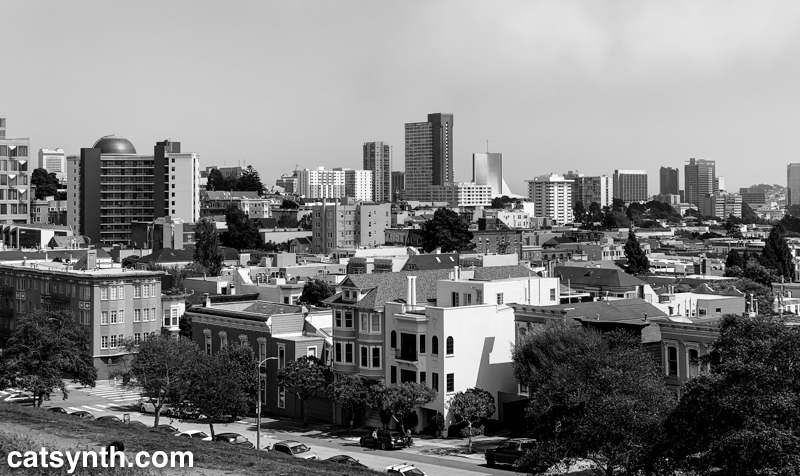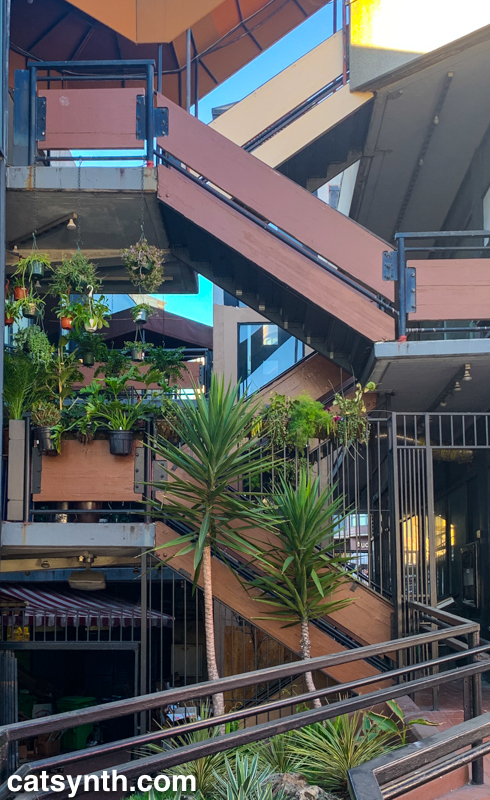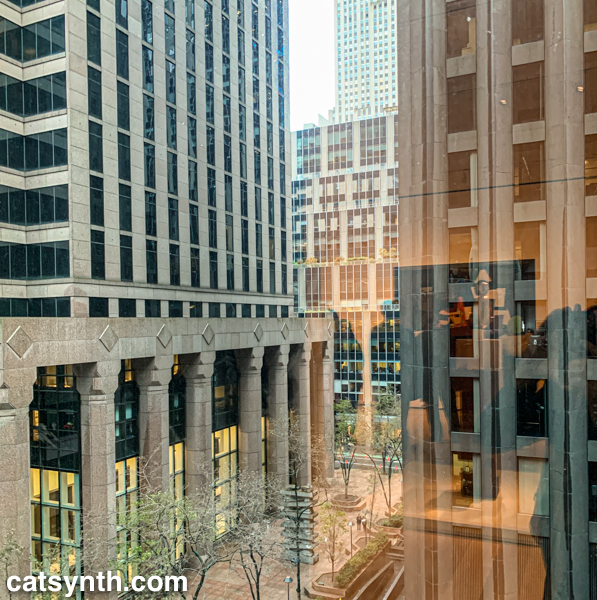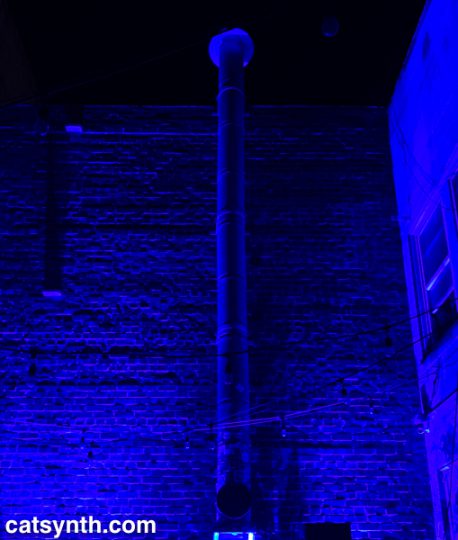
View of old and new architecture in San Francisco from Alta Plaza Park, one of my favorite small parks in the city.


This building on Polk Street has long intrigued me. It feels very out of place style-wise with a more 1960s modern-tropical vibe compared to its more “classic San Francisco” surroundings. It houses some Asian businesses and otherwise seems vacant. I personally like both modernist angles and its dissonance.

Through this window at the Museum of Modern Art in New York, the city itself becomes a work of art. The partial reflections add texture.
If you haven’t already done so, please check out Part 1 of our report from the newly renovated MoMA.

Apropos of yesterday’s Wordless Wednesday post, we have a geometrically proportioned CatSynth Pic today. With the balance of colors (red for the Behringer and Focusrite on the left vs the gray on the right) and the stacked keyboard, this could be right out of our architectural series.
Submitted by Pete Dolan via our Facebook page.

A serendipitous Wordless Wednesday, taken during a concert at the Uptown in Oakland, California. I liked both the architectural detail of the pipe against the brick, and the blue lighting.
Video from the show – the Active Music Series 10th Anniversary festival – will be up on our companion channel CatSynth TV soon. Please subscribe at https://youtube.com/CatSynthTV.